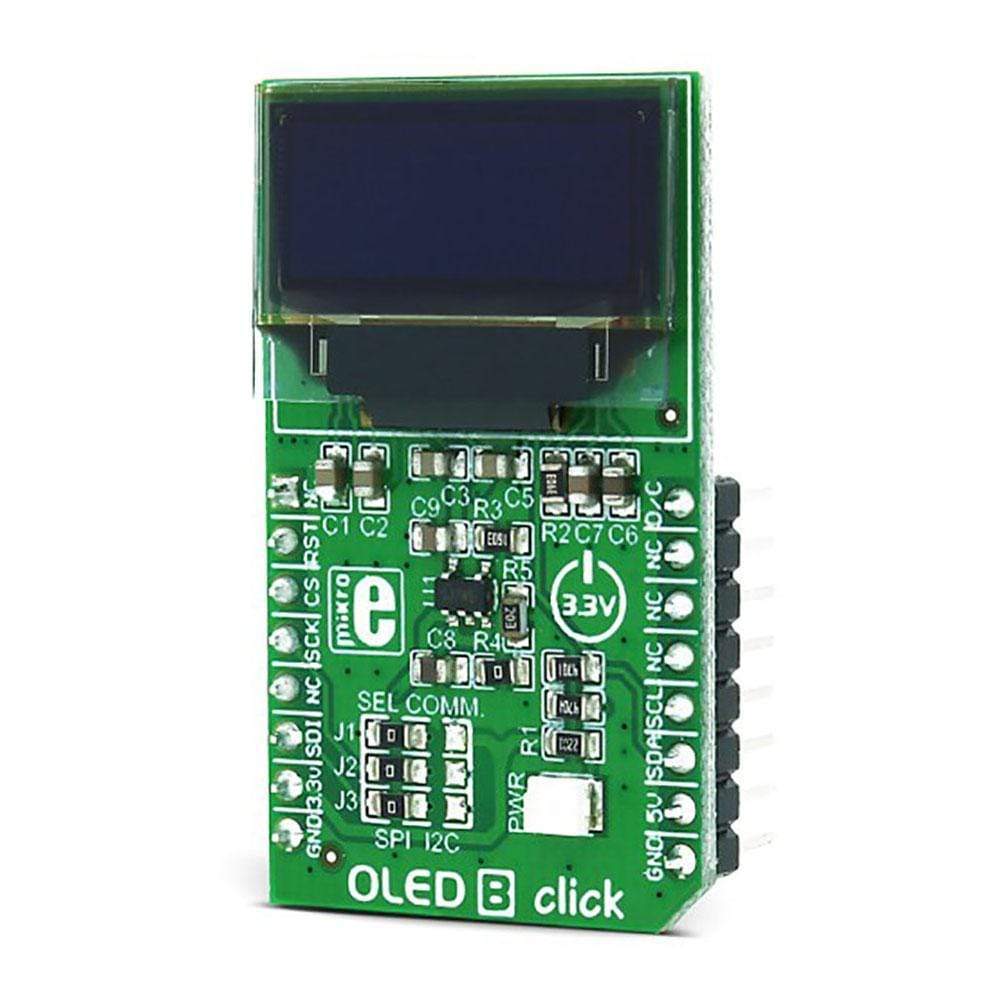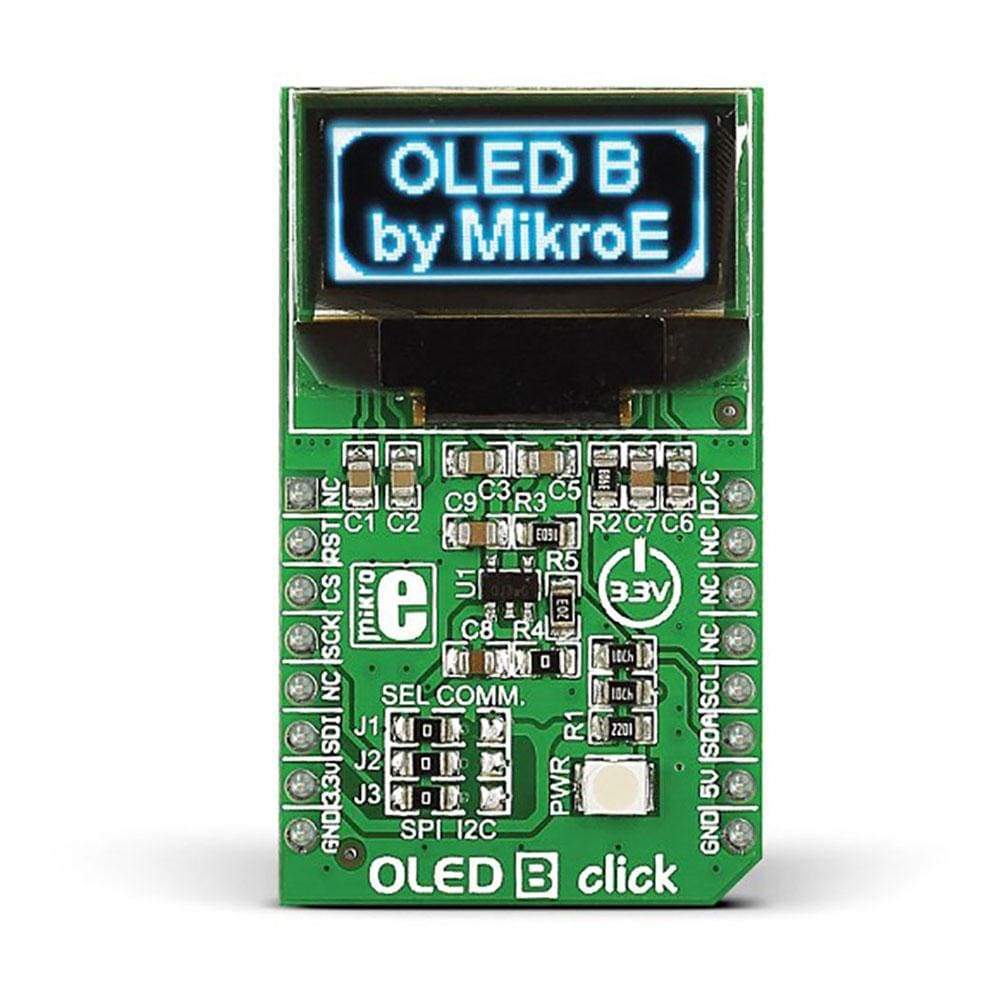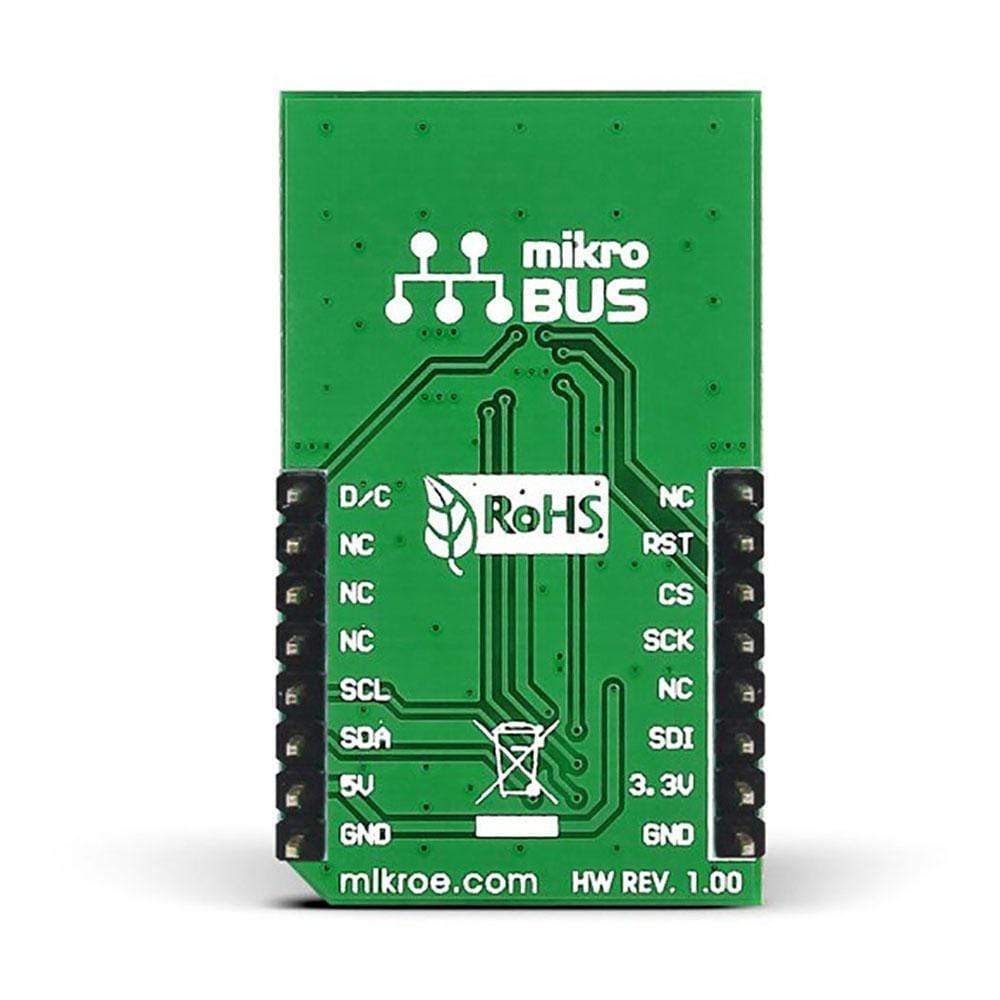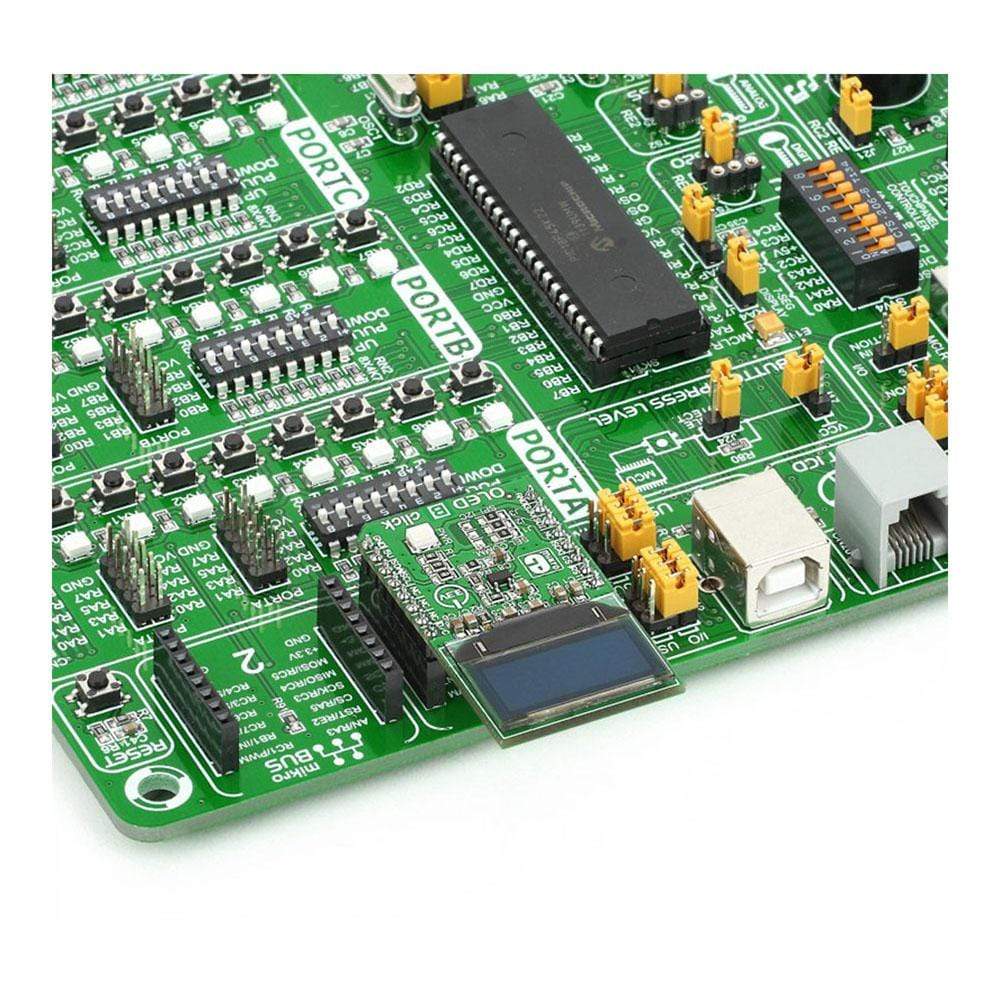



Overview
The OLED B Click Board™ is a display board with a blue monochrome passive-matrix OLED display. This bright and clear 96x39 pixel display is designed to be viewable from wide angles. Controlled by SSD1306 controller, OLED B Click Board™ offers a range of functionalities, including horizontal and vertical scrolling, contrast control, normal or inverse image display and more. The Click Board™ uses SPI or I2C MikroBUS lines to communicate with the target board microcontroller. The interface outputs can be chosen by resoldering three jumpers to the appropriate position. In spite of a sharp, high-contrast display,
The OLED B Click Board™ operates on low power consumption. It is an ideal choice for displaying lines of text or icons. This module uses a 3.3V power supply only.
Downloads
L' OLED B Click Board™ est un panneau d'affichage avec un écran OLED passif monochrome bleu à matrice. Cet écran lumineux et clair de 96 x 39 pixels est conçu pour être visible sous de grands angles. Contrôlé par le contrôleur SSD1306, l'OLED B Click Board™ offre une gamme de fonctionnalités, notamment le défilement horizontal et vertical, le contrôle du contraste, l'affichage normal ou inversé de l'image et bien plus encore. Le Click Board™ utilise des lignes SPI ou I2C MikroBUS pour communiquer avec le microcontrôleur de la carte cible. Les sorties d'interface peuvent être choisies en ressoudant trois cavaliers à la position appropriée. Malgré un affichage net et à contraste élevé,
Le module OLED B Click Board™ fonctionne avec une faible consommation d'énergie. Il constitue un choix idéal pour afficher des lignes de texte ou des icônes. Ce module utilise uniquement une alimentation de 3,3 V.
| General Information | |
|---|---|
Part Number (SKU) |
MIKROE-1650
|
Manufacturer |
|
| Physical and Mechanical | |
Weight |
0.035 kg
|
| Other | |
Country of Origin |
|
HS Code Customs Tariff code
|
|
EAN |
8606015075556
|
Warranty |
|
Frequently Asked Questions
Have a Question?
Be the first to ask a question about this.




